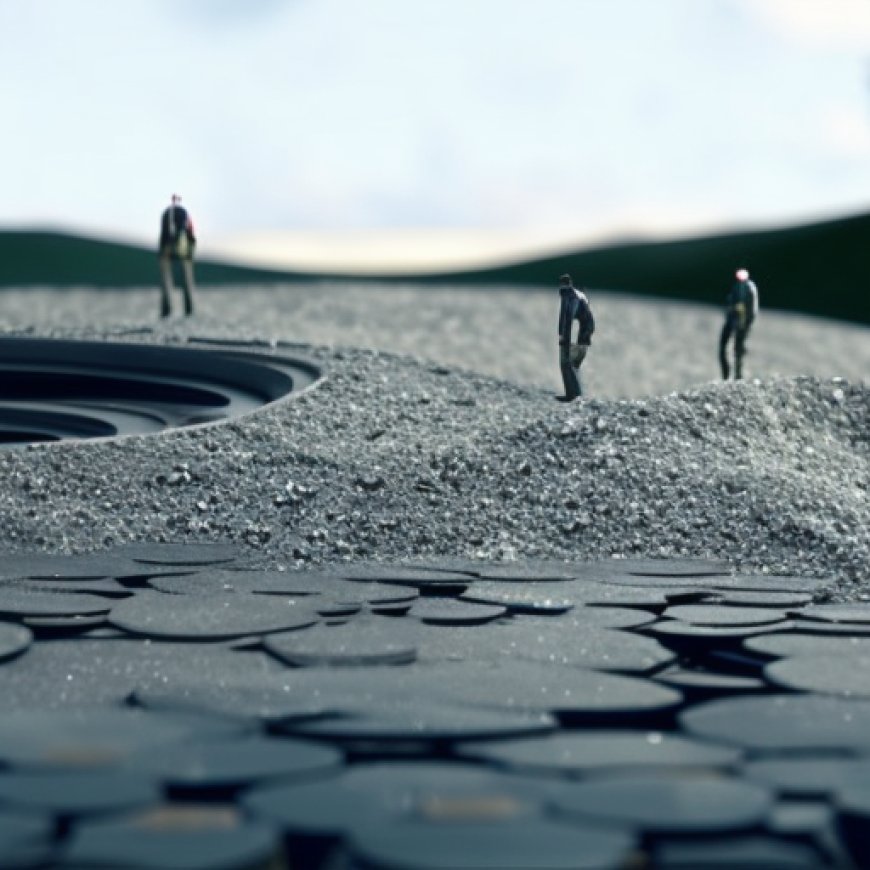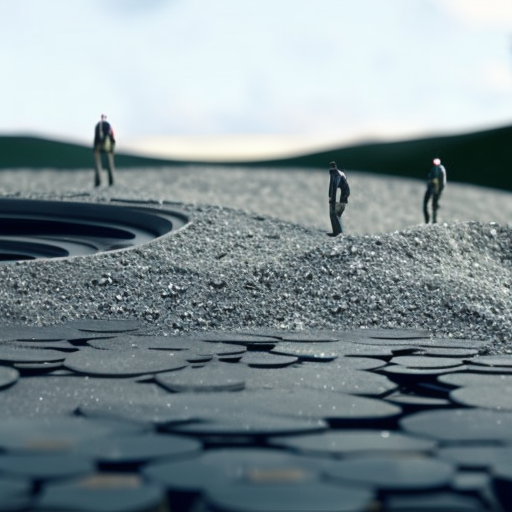A New Use for Old Concrete Could Revolutionize Carbon Capture
A New Use for Old Concrete Could Revolutionize Carbon Capture Popular Mechanics


Rock Weathering and Carbon Sequestration
- Rock weathering is a natural process where minerals in the soil can capture carbon and sequester it as calcium carbonate in the oceans, but the process is an incredibly slow one.
- An Irish startup hopes to speed up the process by purposefully covering agricultural fields with the 1 millimeter-sized bits of waste concrete.
- So far, this counterintuitive technique has shown increased bicarbonate formation, while also improving soil conditions.
Introduction
When the word “concrete” and “field” are used in the same sentence, it’s likely the U.S. is building yet another parking lot. But a new technique of spreading waste concrete across agriculture fields could actually be a double dose of good news. That’s because, according to Ireland-based startup Silicate, this counter-intuitive approach can actually help recapture carbon while increasing crop yields. And the best part? This produces no harmful effects (or parking lots).
Rock Weathering and Carbon Removal
While trees get a lot of attention when it comes to removing carbon dioxide from the atmosphere and for good reason, the Earth has other processes that remove this greenhouse gas from the atmosphere. One of those processes is called rock weathering, which occurs when rocks that are worn away by rain release elements like calcium and magnetism. Eventually, these elements react with the CO2 in the atmosphere to create new rocks like calcium carbonate and limestone, sequestering CO2 in the process.
Silicate’s Concrete Dust Technique
Of course, all of Earth’s CO2 management is being quickly outpaced by human emissions, so scientists and startups are looking for ways to speed up, or “enhance,” this natural process. In November of last year, Silicate did a trial run of its new technology on a 100-acre farm south of Chicago with hundreds of tons of fine dust from ready-mix concrete in the hopes of removing roughly 220 tons of CO2 from the air—about the equivalent of CO2 produced by 50 cars in a year, according The Chicago Tribune—and capturing it in the soil.
The Science Behind the Process
The science is surprisingly simple. Typical concrete is made by heating calcium carbonate (limestone) to form calcium oxide (lime), and once mixed with an aggregate, it becomes concrete. Once the lime reacts with the CO2 in the atmosphere, bicarbonate ions will get trapped in the soil and eventually washed into the ocean, where it will remain for roughly 80,000 years and someday become calcium carbonate again.
With solid concrete, this process is entirely too slow for how quickly the world is warming, but by crushing the concrete into 1 millimeter-sized bits, Silicate hopes to vastly speed up the process. And luckily, there’s no shortage of waste concrete in the world.
Benefits and Soil Improvement
While the company has yet to quantify exactly how much carbon is being removed, New Scientist reports that fields treated with Silicate’s concrete dust contained higher bicarbonate levels than those without. An additional study analyzed oats growing in a test field in Ireland and found that, while the oats in the two fields were the same, the concrete-treated field content 35 percent more seed mass. That’s because in addition to capturing carbon, the company also claims that the concrete is a pH amendment, meaning it can improve soil health.
Challenges and Future Research
While rock weathering could have carbon capture-benefits beyond what even trees can do—after all, trees release their stored carbon when they die—there’s still a lot that scientists don’t know about the effects of this technique downstream. “Does it all eventually make its way into the oceans, which we hope? Or do we lose some of the CO2 back into the air during transport, in rivers and streams?” Frank McDermott, a professor in the Department of Earth Sciences at University College Dublin, pondered in The Chicago Tribune. “I think all of us, all the companies involved and the researchers, are pretty much at the stage of focusing on the initial part, and most of us haven’t had a chance to look at more downstream stuff.”
Sustainable Development Goals (SDGs)
While Silicate’s concrete dust technique shows promise in carbon sequestration and soil improvement, it is important to note that enhanced rock weathering alone will not be enough to address humanity’s CO2 emissions. To achieve sustainable development and combat climate change, it is crucial to focus on reducing greenhouse gas emissions at their source.
SDGs, Targets, and Indicators Analysis
1. Which SDGs are addressed or connected to the issues highlighted in the article?
- SDG 13: Climate Action
- SDG 15: Life on Land
The article discusses the use of waste concrete to capture carbon and improve soil conditions, which directly relates to climate action (SDG 13) and the preservation of terrestrial ecosystems (SDG 15).
2. What specific targets under those SDGs can be identified based on the article’s content?
- SDG 13.2: Integrate climate change measures into national policies, strategies, and planning
- SDG 15.3: By 2030, combat desertification, restore degraded land, and strive to achieve a land degradation-neutral world
The article highlights the use of waste concrete to capture carbon and improve soil conditions, which aligns with the targets of integrating climate change measures into national policies (SDG 13.2) and combating land degradation (SDG 15.3).
3. Are there any indicators mentioned or implied in the article that can be used to measure progress towards the identified targets?
- Bicarbonate formation in soil
- Crop yield improvement
- Carbon dioxide (CO2) removal from the air
The article mentions that fields treated with Silicate’s concrete dust showed increased bicarbonate levels in the soil and higher crop yields compared to untreated fields. Additionally, the goal of the technology is to remove CO2 from the air. These indicators can be used to measure progress towards the targets of integrating climate change measures and combating land degradation.
Table: SDGs, Targets, and Indicators
| SDGs | Targets | Indicators |
|---|---|---|
| SDG 13: Climate Action | 13.2: Integrate climate change measures into national policies, strategies, and planning | – Bicarbonate formation in soil – Crop yield improvement – CO2 removal from the air |
| SDG 15: Life on Land | 15.3: By 2030, combat desertification, restore degraded land, and strive to achieve a land degradation-neutral world | – Bicarbonate formation in soil – Crop yield improvement – CO2 removal from the air |
Behold! This splendid article springs forth from the wellspring of knowledge, shaped by a wondrous proprietary AI technology that delved into a vast ocean of data, illuminating the path towards the Sustainable Development Goals. Remember that all rights are reserved by SDG Investors LLC, empowering us to champion progress together.
Source: popularmechanics.com

Join us, as fellow seekers of change, on a transformative journey at https://sdgtalks.ai/welcome, where you can become a member and actively contribute to shaping a brighter future.







